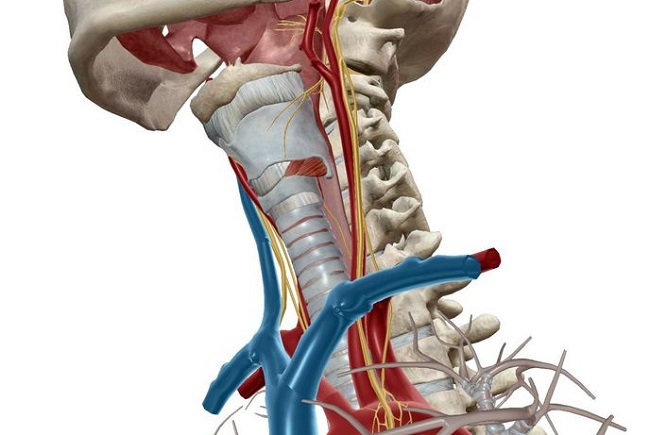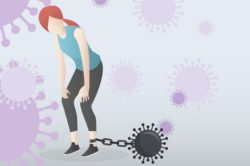Much has been written about the associations between COVID severity, chronicity, and pre-existing conditions. Top among those conditions include cardiovascular disease and diabetes, likely type 2, but both are lumped together. What has not been discussed is why this would be the case. On a basic level, fighting two illnesses takes more energy than fighting one. This is obvious. What is not obvious is that many modern illnesses, especially cardiovascular disease and type 2 diabetes, begin in the mitochondria as a consequence of diet and lifestyle. Statistically, 80% of cardiovascular disease and 78-83% of type 2 diabetes can be traced back to longstanding dietary, lifestyle and environmental issues* that effectively diminish mitochondrial energetic capabilities and disrupt metabolic flexibility; and the remainder that did not originate from diet and lifestyle are certainly affected by these variables.
To function effectively and to convert the foods we eat into energy or ATP, the mitochondria require sufficient vitamins and minerals, 22 of them, in fact. Western diets, while high in calories, are woefully low in these micronutrients, even when fortified, creating what we refer to as high calorie malnutrition. Against this dietary backdrop, reduced ATP then leads to a constant, low level molecular hypoxia. This is not a hypoxia of obstruction or exertion, but more fundamental. For without proper nutrients, mitochondria can neither utilize oxygen effectively to create ATP, nor do they have sufficient ATP to traffic the O2 into the hemoglobin where it can be pumped into circulation to feed tissues and organs. It is a subtle desaturation, at least initially, but one that initiates all sorts of compensatory reactions to mitigate risk; reactions that are necessary and lifesaving in the short term but become increasingly harmful as time passes.
With insufficient ATP, inflammatory and immune reactions become disrupted and even seemingly chaotic; hormone and electrolyte regulation becomes imbalanced and organ and brain function diminishes. We get disrupted autonomic function (dysautonomia), which cycles back and further disrupts everything else. Depression, anxiety and other mental health issues are also common. This underlying mitochondrial distress is part of the reason why patients with comorbid conditions are at increased risk of not only developing but succumbing to COVID, or really, any virulent pathogen. Their mitochondria are already taxed. They are already carrying low-level hypoxia and, in a very real way, they simply do not have the energy to mount or manage a successful defense.
Now, to add insult to already injured mitochondria, we prescribe medications to manage these conditions rather than correct the root cause, which remember is mitochondrial distress. These medications, while they effectively provide the semblance of health, likely cause more damage to an already damaged system. That is, we get more normal labs, or in the case of antidepressants or anxiolytics, we may feel better, but they do nothing to correct the problem. They only exacerbate it further.
An Unappreciated Factor in COVID Severity and Chronicity
A little appreciated fact in medicine, all pharmaceuticals damage mitochondrial function by some mechanism or another. I have published extensively on this topic here on HM and in our book. Sometimes they deplete critical micronutrients and other times they directly distress, damage and/or deform the mitochondrial membrane by forcibly overriding the regulation of key enzymes involved in ATP production. This, of course, is often compounded by poor nutrition and nearly continuous exposures to chemical toxicants in the environment. It is a perfect cycle of destruction. Poor nutrition causes poorly functioning mitochondria, which decreases ATP while increasing cell level hypoxia, which then initiates inflammation and alters immune reactivity, and rather than correct this, we prescribe medications to override what are necessary reactions to poor nutrition and environmental exposures. These medications then elicit additional damage, further decreasing mitochondrial efficiency and ATP, which necessitates extra nutrients to maintain ATP and stave off more damage.
When we consider the association between COVID severity and comorbid health issues, it must be against the backdrop of nutrition and pharmaceutically and environmentally induced mitochondrial damage. The only variables we can control directly are nutrition and pharmaceutical exposures. We can add more nutrition and we can apply medications more cautiously, but more often than not, we choose to do neither. We ignore nutrient status and stack medications on top of each other endlessly, all the while wondering why the patient’s health continues to decline.
Common Drugs Block Vitamins B1, B9, B12, and CoQ10
To illustrate the state of drug-induced mitochondrial hypoxia that plague so many of the patients threatened by COVID, let us look one common medication that as of 2017, 78 million Americans were taking: metformin. Metformin damages the mitochondria by multiple mechanisms that ultimately lead to reduced ATP, entrenched molecular hypoxia, inflammatory cascades and altered immune reactivity. This, of course, is in addition to the neurological sequelae.
Perhaps the most critical nutrient for in mitochondrial health is thiamine. Thiamine, is blocked by metformin. Metformin blocks vitamin B1 – thiamine – uptake by multiple mechanisms. When metformin is present, a set of transporters that normally bring thiamine into the cell to perform its task as a cofactor in the machinery that converts carbs to ATP, brings metformin into the cell instead, replacing thiamine altogether. The transporters involved are the SLC22A1, also called the organic cation transporter 1, [OAT1] and the SLC19A3. Metformin also blocks the lactate pathway and acetyl coenzyme A carboxylase (an enzyme necessary to process fatty acids into fuels). Thiamine is critical for mitochondrial function and its position as gateway substrate into the each the of the pathways leading to the electron transport chain, means that insufficient or deficient thiamine limits ATP production, induces cell level hypoxia and all of the inflammatory cascades that go with this process.
Metformin also depletes vitamins B12 and B9, which are responsible for hundreds of enzymatic reactions and particularly important in central nervous system function including myelination (how many cases of diabetic neuropathy or multiple sclerosis are really vitamin b12 deficiency?) One study found almost 30% of Metformin users were vitamin B12 deficient. For the US alone, that’s 26 million people who could be vitamin B12 deficient and likely do not know that they are deficient. What happens when one is B12 deficient? Inflammation increases, along with homocysteine concentrations, which is a very strong and independent risk factor for heart disease (the very same disease metformin is promoted to prevent). What else happens when B12 is deficient? Poor iron management, better known as pernicious anemia.
Metformin tanks CoEnzyme Q10 which effectively cripples mitochondrial ATP production even further, by as much as 48% in muscles. Imagine having to function in such a reduced capacity. Now imagine having to fight a deadly virus or recover from one. Finally, if the reductions in nutrients and ATP weren’t sufficiently troubling, metformin also interferes with the body’s innate toxicant metabolism pathways, the P450 enzymes, rendering those who use this drug less capable of effectively metabolizing a whole host of other medications and environmental toxicants.
This is one medication. Very few adults who go down this pathway are prescribed just one medication. With metformin, one is likely also to have a statin, perhaps a blood pressure medicine, and if the patient is a women, some form of birth control or hormone replacement. Many are also on antidepressants or anxiolytics. Statins, for example, severely deplete CoQ10, further crippling the electron transport chain. Synthetic hormones deplete a whole host of nutrients (thiamine, riboflavin, pyridoxine, folate, vitamin B12, ascorbic acid, and zinc) while damaging mitochondria via multiple mechanisms.
Long COVID and Medication
Just as the use of medications leading up to and during the illness impact the functioning of one’s mitochondria, the use of medications across time, as one recovers from the infection, will negatively impact mitochondrial capacity as well. This, of course, is in addition to the demand COVID itself places on mitochondrial energy capacity. Data suggests that at least 10% and upwards of 80% of COVID survivors have lingering symptoms. Among the most common are fatigue, brain fog, muscle pain and weakness, and breathing difficulties along with an array of dysautonomias. These are classical indicators of ailing mitochondria and yet common treatment protocols involve more of the same medications and none of the nutrients needed to support them. As we go forward and recover from the COVID pandemic, I think it is incumbent upon us to look at mitochondrial health more closely.
We Need Your Help
More people than ever are reading Hormones Matter, a testament to the need for independent voices in health and medicine. We are not funded and accept limited advertising. Unlike many health sites, we don’t force you to purchase a subscription. We believe health information should be open to all. If you read Hormones Matter, like it, please help support it. Contribute now.
Yes, I would like to support Hormones Matter.
*Environmental issues should be considered as the totality of chemical exposures from environmental, agricultural, industrial, and pharmaceutical sources. Environmental exposures damage mitochondria and should not be excluded as contributing factors to illness.















At the senior facility where my MIL lives, there was a wave of COVID in early January. Over two months later, a large number of residents are experiencing residual effects. The managers are calling the most concerning symptom “COVID brain”–it is confusion that is severe enough to interfere with day-to-day living in many residents. The other main symptoms are constipation and severe fatigue. I have read articles by doctors in a couple of obscure places that “long COVID” is identical to beriberi. I look forward to the day where thiamine is in the mainstream of medicine.